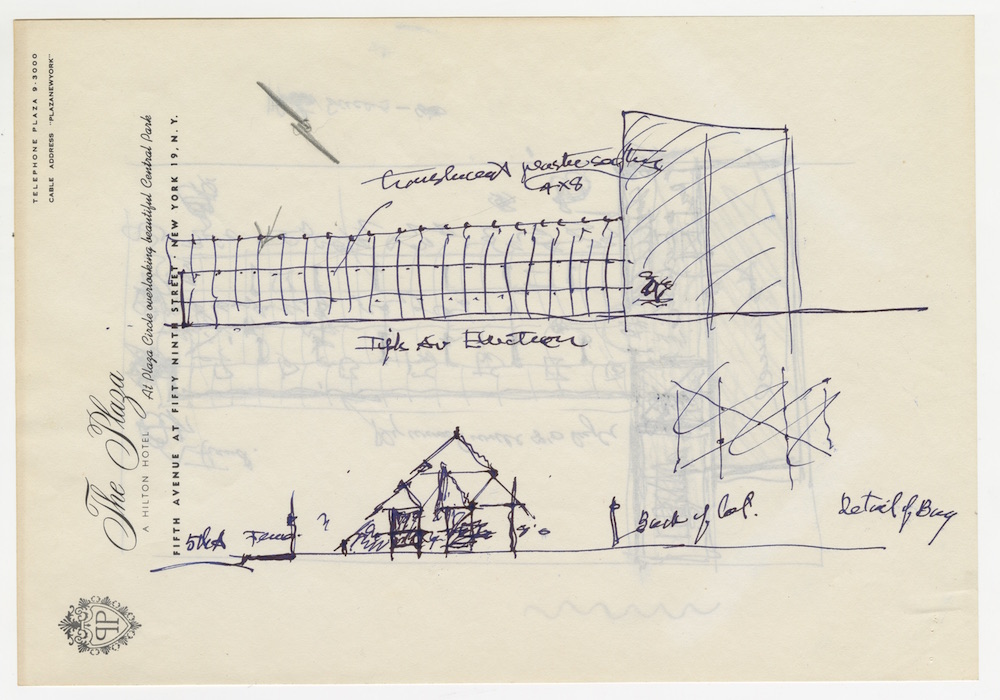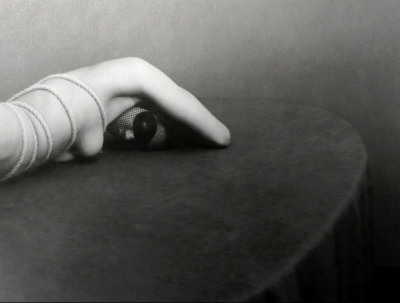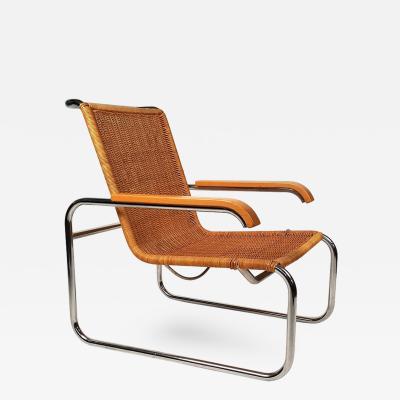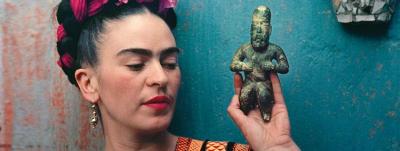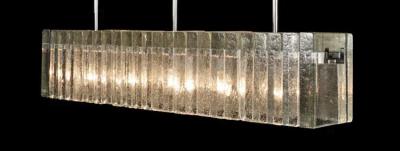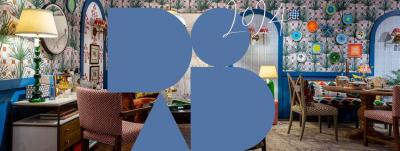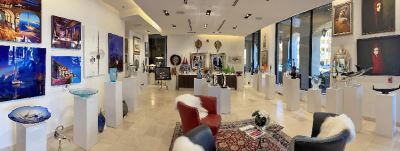This Week's Major Events: Frank Lloyd Wright, Josef Albers Bauhaus Photocollages, Mayfair Antiques & Fine Art Fair & More
January 3–9, 2017
NEW YORK
Frank Lloyd Wright: Usonian House and Pavilion – A Long-Awaited Tribute
Through February 2, 2017
Solomon R. Guggenheim Museum
1071 5th Ave at 89th Street, New York, N.Y. 10128
For more information call 212.423.3500 or visit www.guggenheim.org
This tribute exhibition pays homage to the Usonian House and Pavilion, the first two structures designed and constructed by Frank Lloyd Wright in New York City. Their purpose was to house an exhibition of his work in 1953, entitled Sixty Years of Living Architecture: The Work of Frank Lloyd Wright. The pavilion was made of fiberboard, glass, and pipe columns, while the Usonian House was a 1,700-square-foot, fully furnished, two-bedroom model home that represented Wright’s solution for modest, middle-class residences. This tribute exhibition is composed of selected materials from the Solomon R. Guggenheim Museum Archives, and contains historic photographs, sketches by the architect, and scale models of his work. This long-term exhibition will be ending next month, so be sure to visit before it closes.
Click here to continue reading.
One and One Is Four: The Bauhaus Photocollages of Josef Albers
Through April 2, 2017
Museum of Modern Art
11 West 53rd Street, New York, N.Y. 10019
For more information, call 212.708.9400 or visit www.moma.org
In 2015, the MoMA acquired 10 photocollages by Josef Albers, making its collection the most significant anywhere in the world outside of the Josef and Anni Albers Foundation. This exhibition celebrates the recent landmark acquisition, and the publication of One and One Is Four: The Bauhaus Photocollages of Josef Albers, which makes some of his work public for the very first time. The German-born American artist Josef Albers is a central figure in 20th-century art who inspired countless others when he taught at the Bauhaus, Black Mountain College, and Yale University. Though he is well known for his paintings, drawings, prints, furniture and typography, the least familiar aspect of Josef Albers’ extraordinary career is his engagement with photography. The photocollages he made at the Bauhaus between 1928 and 1932 are among the most outstanding highlights of his work, and convey his concerns with seriality, perception, and the relationship between handcraft and mechanical production.
Click here to continue reading.
PARIS

- Erich Consemüller, Scène du Bauhaus: inconnue au masque dans un fauteuil tubulaire de Marcel Breuer portant un masque de Oskar Schlemmer, (Unknown person in tubular armchair by Marcel Breuer wearing a mask by Oskar Schlemmer), photography, 1926 © Bauhaus-Archiv Berlin.
The Spirit of Bauhaus
Through February 26, 2017
Musée des Arts Décoratifs
107 Rue de Rivoli, 75001, Paris
For more information call +33 (0)1 44 55 57 50 or visit www.lesartsdecoratifs.fr/en
The Bauhaus art school was a major influence on 20th-century art. It was founded by Walter Gropius in 1919 in Weimar, Germany. The Bauhaus was meant to improve our overall habitat and architecture through a synthesis of the arts, crafts, and industry. After almost fifteen years of extraordinary experimentation in all fields, the Nazis forced the school to close in 1933. This exhibition shows the historic context that helped create the Bauhaus, ranging from the construction of cathedrals and the British Arts & Crafts movement, to the German avant-garde, and Viennese utopias like the Wiener Werkstätte. Masters like Marcel Breuer, Herbert Bayer, Paul Klee, and Wassily Kandinsky were among the avant-garde artists and artisans that taught workshops at the school. Ludwig Mies van der Rohe was the last director of the Bauhaus before it closed. Visitors to the exhibition can follow all the stages of the Bauhaus teaching program as if they are students. The exhibition ends by highlighting the work of contemporary artists and designers who still embody the unbreakable Bauhaus spirit. This exhibition features an astounding 900 objects, furniture, textiles, drawings, models, paintings, and more, placed within the context of the school.
Click here to continue reading.
Related Article: A New Bauhaus Museum Will Open in 2019
LONDON

- Sir William Russell Flint, R.A., P.R.W.S., R.S.W. (1880-1969), Isoult la Desirous and the Forest Maidens, 1908. Oil on panel, 11 x 15 inches. Signed and dated lower right: W. Russell Flint, 1908. Exhibited by Atelier at the 2017 Mayfair Antiques & Fine Art Fair.
The Mayfair Antiques & Fine Art Fair
January 5-8, 2017; Thursday: 12–9pm, Friday & Saturday: 11am–6pm; Sunday 11am–5pm
London Marriott Hotel, Grosvenor Square, Duke Street, London W1K 6JP
For more information, visit www.mayfairfair.com
To kick off the new year, the fifth annual Mayfair Antiques & Fine Art Fair will present an array of high quality art and antiques, including furniture, sculpture, silver, oil paintings and watercolors, jewelry, ceramics, antiquities, glass, lighting, clocks, watches, 20th-century design pieces and various other rare objects spanning the centuries. The Mayfair Fair will feature forty of the most distinguished specialist exhibitors, predominantly from the British Antique Dealers’ Association and LAPADA, the Association of Art & Antiques Dealers. This year, for the first time, the Queen Elizabeth Scholarship Trust (QEST) scholars will be demonstrating their skills, including stained glass, leatherwork, sculpted typography, stone masonry, metalwork, and woodwork. Some of the scholars’ work will be available for sale. Located at the five-star London Marriott Hotel Grosvenor Square in the vibrant and historic West End, the fair will take place this week from Thursday through Sunday. Admission is £10 at the door, or you can register to access complimentary tickets on the fair’s website in advance.
Click here to continue reading.
VIENNA
Franz West – ARTISTCLUB
Through April 23, 2017
21er Haus Museum of Contemporary Art
Quartier Belvedere, Arsenalstraße 1, 1030 Vienna, Austria
For more information, call +43 1 795 57-770 or visit www.21erhaus.at/21h_en
A newly opened exhibition at the 21er Haus in Vienna entitled Franz West – ARTISTCLUB shows central works by the Austrian artist created in collaboration with thirty-six different artists. ARTISTCLUB was a participatory project started by Franz West in 1999 where he radically challenged the relationship between the artist, artistic work and the recipient. His most prominent pieces of seating furniture and large-scale outdoor sculptures were created around his guiding principle of participatory art. West's sculptures and installations always offer the visitor an opportunity to engage in a dialogue. The 21er Haus attempts to revive Franz West's concept of the ARTISTCLUB with this exhibition by reflecting his concepts of art as a participatory act. Starting in mid-January, the ARTISTCLUB idea will be newly reinterpreted every second Wednesday evening, and visitors to the exhibition are invited to interact with all of the art objects, participate in lectures, talks, concerts, performances and more.
















